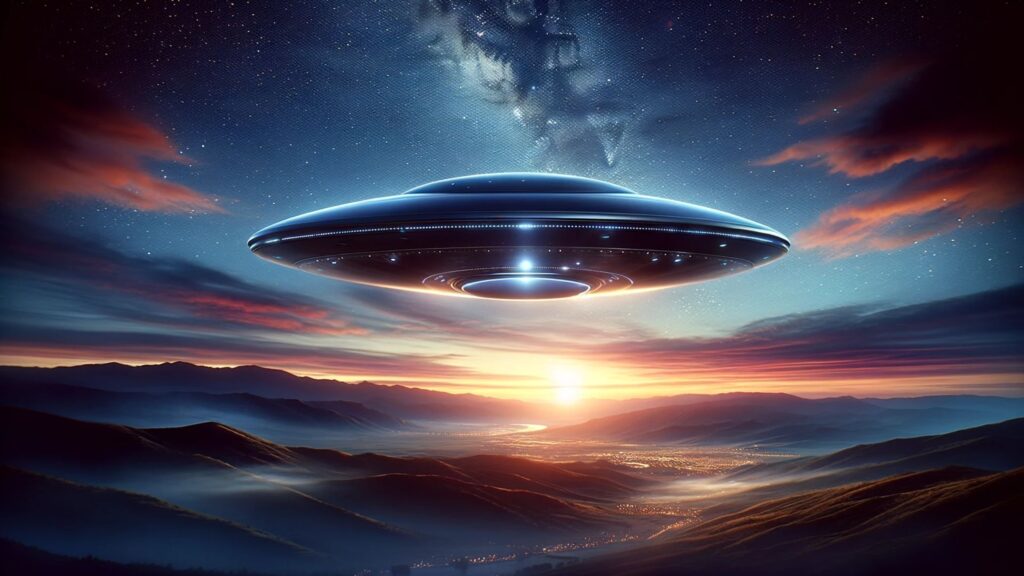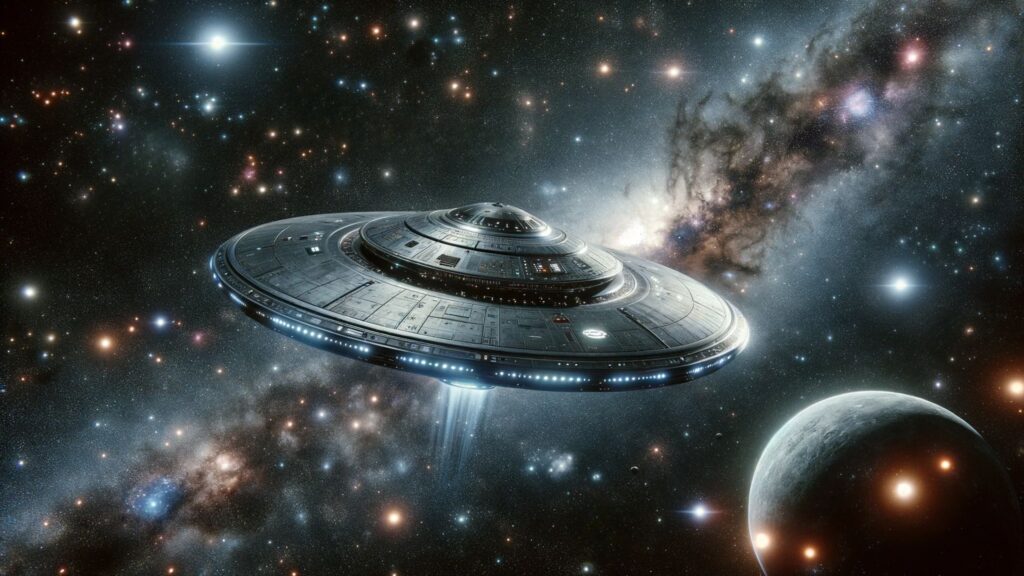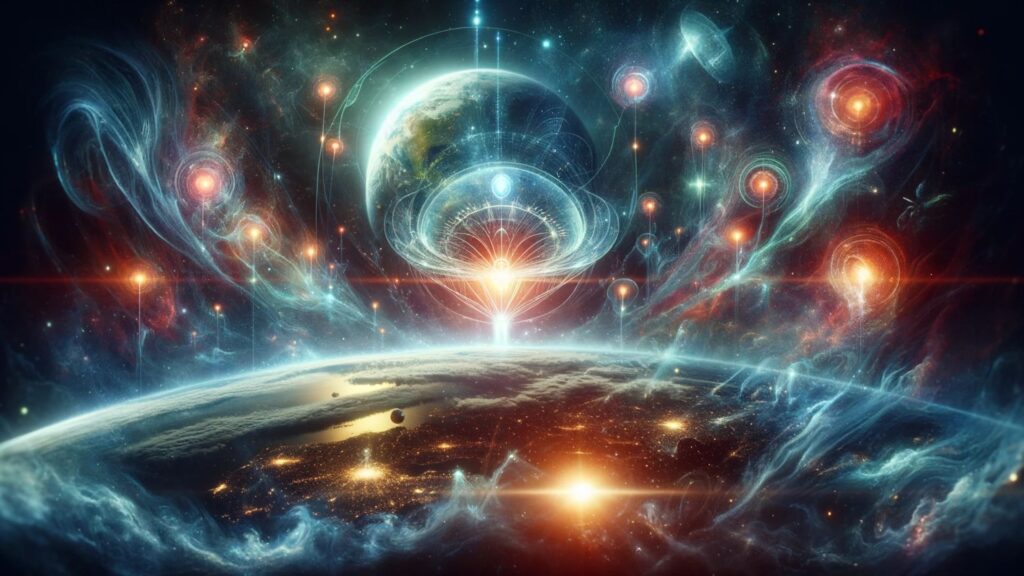The question of whether UFOs are intergalactic or interdimensional is one that ufologists and scientists have debated for decades. There is no scientific consensus on the answer, and the available evidence is inconclusive.
Intergalactic Hypothesis
The intergalactic hypothesis suggests that UFOs are spacecraft from other planets in our galaxy or beyond. Proponents of this hypothesis point to the vastness of the universe and the billions of other stars that likely harbor planets capable of supporting life. They also argue that some UFOs have been observed to exhibit speeds and maneuverability that are beyond the reach of current human technology.
Interdimensional Hypothesis

The interdimensional hypothesis suggests that UFOs are not physical objects from another planet but rather manifestations of other “dimensions” that coexist alongside our own. Proponents of this hypothesis argue that these dimensions may be accessible through wormholes or other anomalies in the fabric of spacetime. They also point to the bizarre and often inexplicable behavior of UFOs, which they claim is more consistent with the idea of interdimensional phenomena than with extraterrestrial visitations.
Evidence for Intergalactic UFOs
There is some evidence to support the idea that UFOs may be of extraterrestrial origin. For example, some UFOs have been observed to exhibit speeds that are many times faster than the speed of light, which is theoretically impossible for any physical object to achieve. Additionally, some UFOs have been seen to make sudden and inexplicable maneuvers that would be impossible for any human-made craft to perform.
Evidence for Interdimensional UFOs

There is also some evidence to support the idea that UFOs may be interdimensional. For example, some UFO sightings have been reported in areas with high levels of electromagnetic activity, such as near power lines or nuclear reactors. Additionally, some UFOs have been reported to exhibit strange effects on electronic equipment, such as causing radios to go haywire or lights to flicker.
For ages, the enigma of Unidentified Flying Objects (UFOs) has captivated our imagination, stirring debates and theories. Are these mysterious sightings mere figments of our imagination, or do they herald a far more profound truth about our universe? This exploration delves into the heart of a question that has puzzled scientists and enthusiasts alike: Are UFOs intergalactic travelers from distant galaxies, or are they visitors from other dimensions, unseen yet intertwined with our own?
- Intergalactic Hypothesis: Explores the possibility of UFOs as spacecraft from other galaxies.
- Interdimensional Hypothesis: Considers UFOs as entities from different dimensions coexisting with ours.
- Scientific and Paranormal Perspectives: Examines how both hypotheses align with current scientific understanding and paranormal research.
Understanding UFOs: Basic Concepts and Definitions

When we speak of UFOs, we refer to phenomena that defy our current understanding of physics and aerospace. These unidentified objects, often spotted in our skies, challenge our perception of reality. The intergalactic hypothesis posits these UFOs as spacecraft from other galaxies, suggesting a universe teeming with life beyond our planet. On the other hand, the interdimensional hypothesis proposes a more enigmatic origin, situating these phenomena in realms beyond our standard three-dimensional space. This radical idea suggests that UFOs might be manifestations of dimensions that exist parallel to our own.
The Intergalactic Hypothesis

This theory paints a universe where interstellar travel is not only possible but also practiced by civilizations far more advanced than ours. Proponents of this view argue that the vastness of the universe, with its billions of galaxies, makes it statistically probable for intelligent life to exist elsewhere. They point to numerous sightings of unidentified aerial phenomena (UAPs) that exhibit flight characteristics beyond our current technology as potential evidence of extraterrestrial visitation.
The Interdimensional Hypothesis

In contrast, the interdimensional hypothesis, proposed by figures like Jacques Vallée, suggests that UFOs may originate from different realities or dimensions. This theory aligns with certain unexplained aspects of UFO sightings, such as their sudden appearance and disappearance and their seemingly impossible maneuvers in our skies. It challenges our understanding of reality, positing that these visitors may not be bound by the laws of our physical universe.
Evidence and Case Studies

Declassified documents, such as those from the FBI, have mentioned interdimensional beings, lending some credibility to this theory. Notable sightings and encounters often include descriptions of crafts and beings that defy our conventional understanding of space travel, suggesting a technology that operates beyond our current scientific knowledge.
Scientific and Paranormal Perspectives

The realms of science and the paranormal, often seen as polar opposites, converge in the discussion of UFOs. Quantum physics, with its exploration of multiple dimensions and the non-linear nature of time, provides a scientific backbone to the interdimensional hypothesis. This theory posits that if other dimensions exist, they could be home to entities or forms of life that we can scarcely comprehend. UFO sightings and encounters, thus, could be these entities interacting with our dimension.
Paranormal researchers add a fascinating layer to this discourse. They often interpret UFO sightings through a supernatural lens, suggesting that these phenomena could be manifestations of entities from higher planes of existence. Such perspectives challenge the traditional extraterrestrial narrative, proposing instead that these sightings are part of a much larger, more complex cosmic tapestry.
Cultural Impact and Representation in Media

The intrigue surrounding UFOs has significantly impacted our culture and media. Films like “Interstellar” and “Indiana Jones and the Kingdom of the Crystal Skull” have explored these themes, blending science fiction with mystical elements to reflect the interdimensional hypothesis.
These portrayals underscore our fascination with the unknown and the possibilities that lie beyond our current understanding. They invite viewers to ponder the existence of other dimensions and the beings that might inhabit them, fueling the public’s imagination and curiosity.
FAQs
Q: How do the intergalactic and interdimensional hypotheses differ?
A: The intergalactic hypothesis views UFOs as spacecraft from other galaxies, suggesting physical travel across the cosmos. In contrast, the interdimensional hypothesis sees them as entities from different, coexisting dimensions involving more esoteric concepts of reality.
Q: What evidence supports the interdimensional hypothesis?
A: Evidence for this hypothesis includes the elusive and often inexplicable nature of UFO sightings, where crafts appear and vanish suddenly and perform maneuvers that defy known physics. Declassified documents and ufologist research also support this view.
This exploration into the mysteries of UFOs – whether they are intergalactic or interdimensional – invites us to expand our understanding of the universe and our place within it. Are we witnessing visitations from distant galaxies, or are we glimpsing into parallel dimensions? The answer remains as elusive as the phenomena themselves, but the pursuit of this knowledge continues to captivate and intrigue us.
In exploring the enigmatic nature of UFOs, it’s essential to consider various phenomena that have puzzled humanity for centuries. One such phenomenon is the occurrence of atmospheric lights, which have their own rich history and mythology. For a deeper understanding of these mysterious lights and how they might relate to our discussion on UFOs, I recommend reading our detailed article on The History and Mythology of Atmospheric Lights Around the World. This exploration provides valuable context and may offer insights into the broader conversation about unexplained aerial phenomena.
